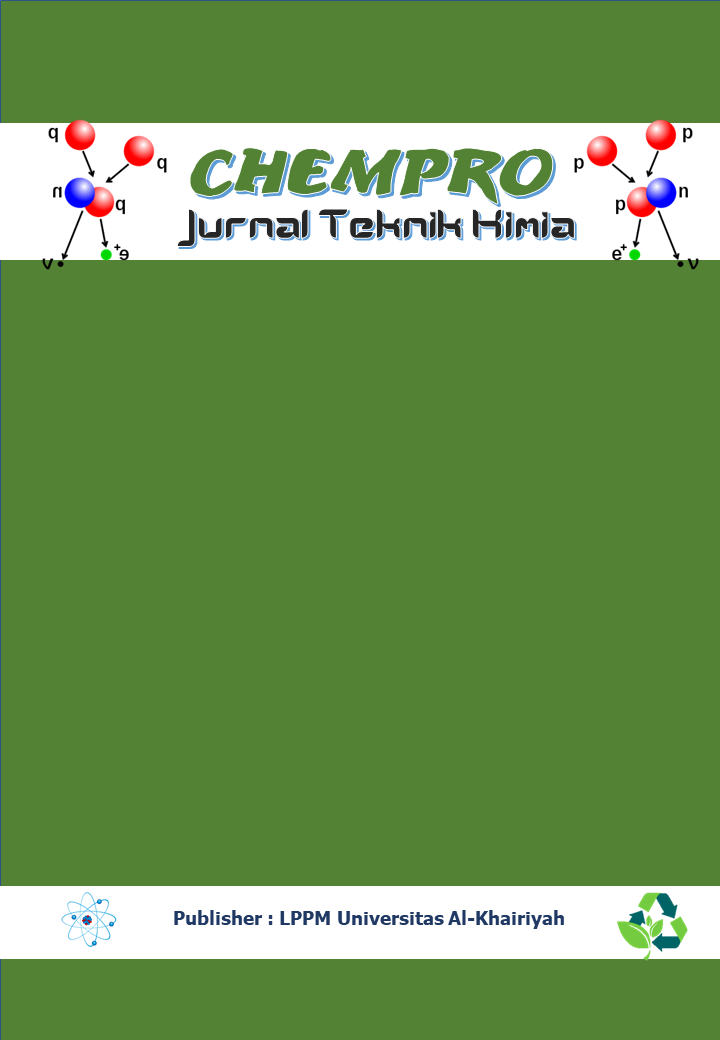Isolation Of Flavonoid Compouns From The Leave Of The Mistletoe Host Jengkol Tree
Keywords:
Jengkol mistletoe, TLC, Column chromatography, FlavonoidsAbstract
Mistletoe is a parasitic plant that attaches itself to other plants to extract nutrients. It can be used
as a traditional medicine because this plant contains an active compound known as flavonoids.
Antibacterial activity tests were conducted on flavonoid compounds. The Isolation of flavonoid compounds
began by soaking dried mistletoe powder for 24 consecutively using hours using solvents n-hexane, ethyl
acetate and methane. The obtained extract was then concentrated using a rotary vacuum evaporator.
Flavonoid tests were conducted using the FeCl3 5% reagent and NaOH 10%. Spot test with thin layer
chromatography used solvent ratios of hexane: chloroform 3:2, 1:1, 2:3, 1:4 and chloroform: ethyl acetate
3:2, 1:1, 2:3, 1:4, 1:5 , 1:7, and 1:9. The Solvent that could separate the spots on the TLC was chloroform:
ethyl acetate = 2:3 (2 fractions), 1:4 (2-fractions), 1:5 (2 fractions), and 1:9 (4 fractions of the 6th fraction
in A single stain was obtained with Rf = 0.49 using the eluent chloroform ethyl acetate 1: 5. The 6th
fraction was concentrated using a vacuum rotary evaporator to obtain a concentrated extract with a deep
green color weighing 1.5 g.
References
Adler, L.S. (2002). Host Effect
onHerbivora and Pollination in
aHemiparasitic Plant. Ecology. 83(10):
– 2710
Alyudi. (1999). Isolasi dan Identifikasi
Senyawa Flavonoid dari Daun Benalu
(Dendrophthoe sp.) Jengkol. Skripsi.
Universitas Lampung. Bandar Lampung.
Artanti, N.Y., Ma’arifa & M. Hanafi.
(2006). Isolation and Identification of
Active Antioxsidant Compound from
Star Fruit Mistletoe Dendrophthoe
pentandra (L) Miq, Ethanol Extract.
Journal of Applied Sciences, 6(8): 1659-
Hardianti, Rini. (2019). Studi Fitokimia
dan Bioaktivitas Senyawa Flavonoid dari
Daun Benalu Duku (Dendrophthoe
pentandra (L. Miq) Loranthaceae)
http://repositori.usu.ac.id/handle/12345678
/20868
Jiang, Z-H., Tanaka, T., Sakamoto, M.,
Jiang, T. & Kouno, I. (2001). Studies on
Medicinal Plant: Lignans from the Stems of
Cynomorium songaricum. Chemical and
Pharmaceutical Bulletin. 49(8): 1036
– 1038
Khopkar, S.M. (2002). Konsep Dasar
Kimia Analitik. Universitas Indonesia
Press. Jakarta.
Piaru, S.P., Mahmud, R., Majid, A.M.S.A.
& Nassar, Z.D.M. (2012). Antioxidant and
antiangiogenic activities of the essential
oils of Miristica fragrans and Morinda
citrifolia. Asian Pacific Journal of
Tropical Medicine. 5(4): 294 – 298.
Robinson, T. (1995). Kandungan Organik
Tumbuhan Tinggi. Alih Bahasa Kosasih.
Padmawinata. Institut Teknologi Bandung,
Bandung.
Runyon, J. B., Tooker, J.F., Mescher, M.C
& De Moraes, C.M. (2009). Parasitic
Plants in Agriculture: Chemical Ecology of
Germination and Host-Plant Location as
Targets for Sustainable Control: A Review.
In De Moraes, C.M. (ed). Organic Farming,
Pest Control and Remediation of Soil
Pollutants. Pp. 123 – 136.
Soejono. (1995). Inventarisasi Pohon
Inang Benalu di Kebun Raya Purwodadi.
Makalah Seminar Kelompok Kerja
Nasional Tumbuhan Obat Indonesia IX 21-
September 1995. Universitas Gajah
Mada. Jogja.










